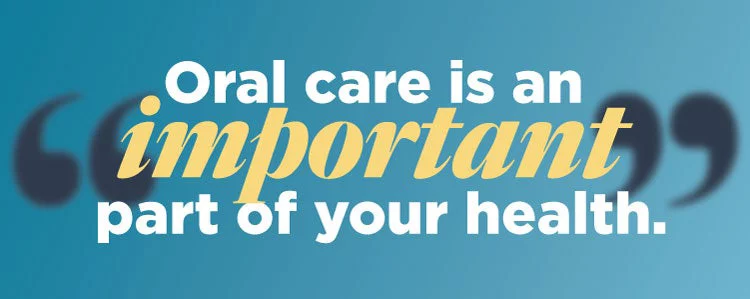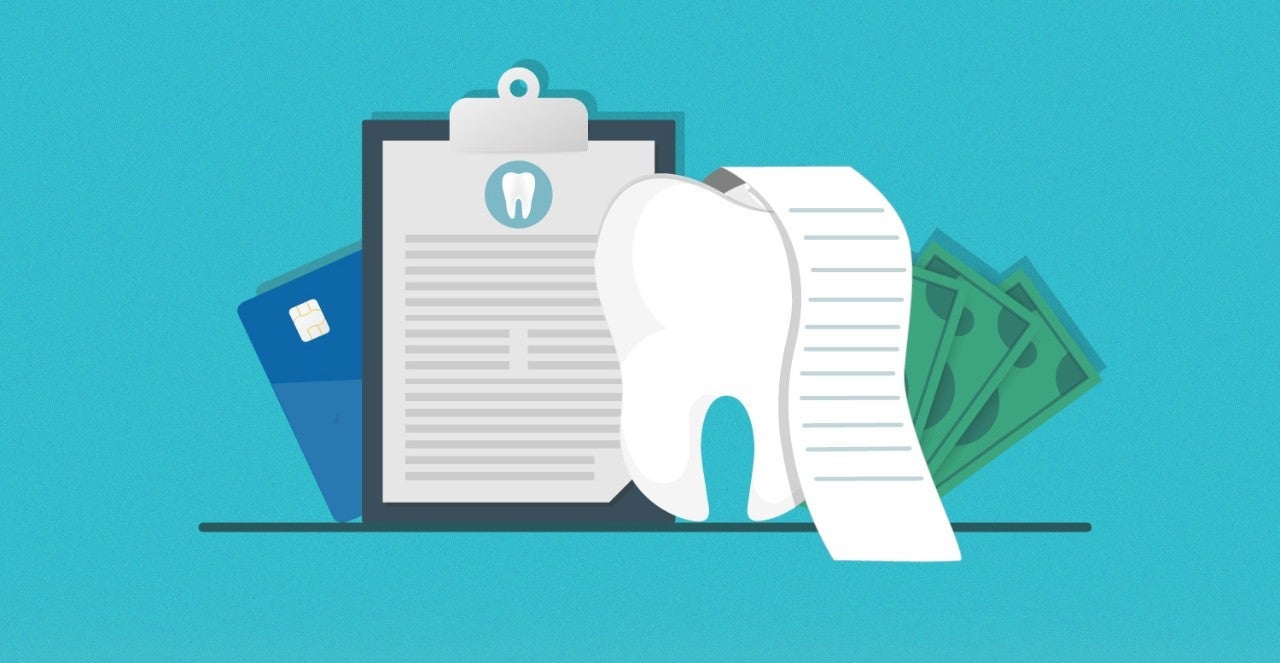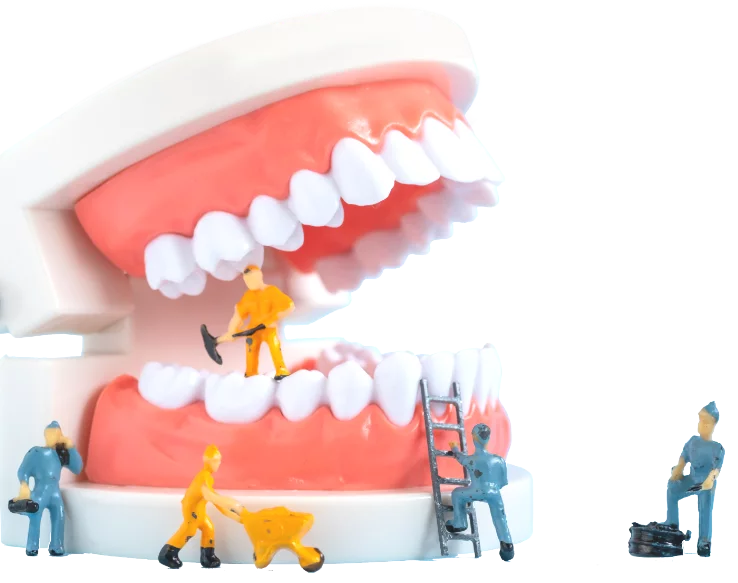Maintaining your health includes several factors such as eating nutritious food, regular exercise, and proper health care. But proper health care involves more than just a yearly doctor visit.
Oral care is an important part of your health too. So having dental insurance is just as important as having health insurance. Here’s what you should know about dental benefits, how dental insurance work, and how to get dental insurance.
Impact Dental Benefits Have on Your Oral Health
Part of a good mouth health regimen is seeing a dentist for routine cleanings and checkups. But if you don’t have dental insurance, you might try to get by with simply brushing and flossing. Unfortunately, although seeing a dentist every 6 months is important, individuals skip these checkups, and most of the time it’s mostly due to cost.
Oral health issues can form without a dentist monitoring what’s happening with your teeth and gums. So try to do mental check-ins regarding your mouth health. Have you noticed any tooth or jaw pain? Do your gums bleed? Symptoms such as those could indicate you could have a serious and costly oral care problem on your hands.
So, because having dental insurance helps cover the costs of dental treatments, we’ve learned there is a connection between those with coverage and those with healthier oral health. Those who have dental insurance are more likely to see a dentist and take their children to a dentist. At the dentist they receive their regular cleanings and oral exams that could prevent gum disease. Dental checkups and Routine Cleanings are just as important as daily brushing and flossing.
Impact of Dental Benefits on Your Overall Health
The mouth performs a lot of the fun functions. Who doesn't like to talk, smile, and eat? But the mouth also leads to the respiratory and digestive tracts. So bacteria that collects in your mouth can potentially cause health issues for those systems.
Take note of your oral health. Poor oral health might be connected to serious health issues such as cardiovascular disease, endocarditis, pneumonia, diabetes type II, and pregnancy birth complications. Keeping your mouth healthy helps keep your body healthy.
Approximately 173 million individuals at the end of 2018 had private dental insurance, that's roughly around half of Americans that are covered. Roughly 93 percent of these individuals got their benefits through their employer or group programs like AARP. Others have coverage through government programs such as Medicare or Medicaid. Rest assured there are other affordable dental insurance options for those who don’t fall into either category.
Dental Preferred Provider Organization (PPO) Plans
A PPO is the most common policy for individuals. Under this type of plan, patients receive a discounted rate for services by a network of dentists. Patients can see in-network dentists or out-of-network dentists. However, the amount the plan covers differs. Seeing in-network dentists results in that dentist being paid a portion of the discounted rate directly by the plan. The patient could have a copay or a deductible to cover. Seeing out-of-network dentists results in a reduction of the benefits paid by the plan and an increase in out-of-pocket cost to the patient.
A PPO plan helps patients save money, though there is a capped maximum benefit. The patient is responsible for any treatment costs, regardless of whether it is necessary once the maximum benefit is exceeded. However, some services will be excluded from coverage if they are deemed to be cosmetic. But unlike other policies, a PPO plan lets you see any dentist
Dental Health Maintenance Organization (HMO) Plans
Under a dental HMO, patients are assigned to a dental office, and that office receives a minimal monthly set fee per plan member. When a member needs any of the contracted services provided through the HMO, the patient pays a copayment to the office directly.
An HMO saves patients significant money on some procedures while also making the budgeting process for dental care more manageable. The biggest trade-off that results from having an HMO is the patient must receive any treatments at their assigned dental office. Opting to use a different dental office could result in the patient paying the entire cost of the procedure.
A dental indemnity plan works on the concept of paying a specific fee for a particular service. Patients typically have a deductible that they’re responsible for meeting before the plan kicks in and there is a capped maximum benefit. Once the deductible is met in full, the plan pays a percentage of the cost for covered treatment. The plan will typically cover 50 to 80 percent of a treatment cost, so the patient is responsible for the remaining amounts. Each plan is different, so the amount covered by the plan can vary.
Patients can usually choose to see any dentist since this type of plan doesn’t provide a network of dentists as a PPO does. Payment methods for an indemnity plan can vary too. You might have to pay your dentist at the time of services and file an insurance claim for reimbursement afterward. Or your dentist might file a claim directly with the insurance company for you.
What do Dental Plans Actually Cover?
When selecting the right plan coverage for you, you’re probably wondering what does dental insurance cover? Due to the cost of some procedures, it’s important to understand what procedures are covered and not covered.
Common Procedures Covered
- Dental insurance policies classify procedures into seven categories:
- Preventive Care: Including office visits and regular cleanings
- Restorative Care: Including crowns and fillings
- Endodontics: Including root canals
- Oral Surgery: Including tooth extraction and minor surgical procedures
- Orthodontics: Including braces and retainers
- Periodontics: Including scaling and root planing
- Prosthodontics: Including bridges and dentures
These procedure categories are then classified into three areas related to payment. They are preventive care, basic procedures, and major procedures. Preventive care includes oral exams, X-rays, and often sealants. Basic procedures include office visits, cavity fillings, tooth extractions, root canals, and gum disease treatment. Major procedures include bridges, crowns, dentures, and inlays.
Common Procedures Not Covered
Any dental procedure that is classified as cosmetic usually isn’t covered by insurance. Teeth whitening, veneers, tooth contouring, and dental bonding can all be classified in certain instances as cosmetic.
Does Medicaid Cover Dental?
Medicaid covers comprehensive dental care for children under the Early and Periodic Screening, Diagnostic and Treatment (EPSDT) benefit. The federal government requires all states to provide this benefit for children.
Folks who are on Medicare will probably have the same question as oral care is critical to seniors. While traditional Medicare, Medicare Part B, doesn’t cover standard dental procedures, Medicare Advantage (MA) does. A MA dental plan typically covers oral exams, cleanings, X-rays, cavity fillings, tooth extractions, root canals, bridges, crowns, implants, and dentures.
What about the Affordable Care Act? Does Obamacare cover dental procedures? It does for kids. Children’s dental benefits are also covered as pediatric health services under the Essential Health Benefits found in marketplace policies.
In most Dental offices you will also find the option to pay for your dental treatment in payments by financing the procedure(s). Care Credit is one used throughout most dental offices. The Smile Generation also has a Smile Generation Dental Plan and Smile Generation Financial Credit Card, which offer flexible solutions customized to your needs and can be used at any of the Smile Generation Trusted offices across the country.
There are several factors that you should consider when determining what type of dental plan works best for you. If you can get them through your employer, that is probably an ideal scenario. As with your health insurance, there will be copays and deductibles, but you’ll have to pay those with other plans too.
Finances will play a large role in determining the type of benefits plan that works best for your needs. Different dental procedures have different costs. The simpler and more common the procedure, such as a regular tooth cleaning appointment, the smaller the cost. Here is a range of costs for typical dental procedures a patient might need.
- Teeth Cleaning: $70 to $200
- Dental X-rays: $20 to $250
- Exam by a Dentist: $50 to $150
- Filling a Cavity – Silver Amalgam: $50 to $300
- Filling a Cavity – Tooth-Colored Composite: $90 to $450
- Dental Crown – Porcelain Fused to Metal: $500 to $1,500 per tooth
- Dental Crown – Gold or Metal Alloys: $600 to $2,500 per tooth
- Dental Crown – Porcelain: $800 to $3,000 per tooth
- Root Canal – Front Tooth: $300 to $1,500
- Root Canal – Bicuspid: $400 to $1,800
- Root Canal – Molar: $500 to $2,000
- Tooth Extraction – Simple: $75 to $450
- Tooth Extraction – Surgical: $150 to $650
- Wisdom Tooth Removal – Simple Extraction: $75 to $200 per tooth
- Wisdom Tooth Removal – Impacted Tooth: $225 to $600 per tooth
Dental bridges and dental implants are expensive procedures with varying cost ranges depending on the number of teeth involved. A dental bridge starts at $1,000 to $3,500. Dental implants start at $1,000 to $3,000.
Cosmetic procedures usually are not covered by dental insurance, so those expenses will be entirely out-of-pocket for the patient. Teeth whitening in a dental office can run from $300 to $1,000. Veneers can cost $500 to $1,300 per tooth. And cosmetic bonding averages between $300 to $600 per tooth.
Keeping your teeth healthy through diligent oral care and regular cleanings is the best way to avoid costly payments copays and deductibles. Knowing the costs associated with many common dental procedures answers the question is dental insurance worth it
Once you’ve determined the best dental plan that works for you and how to apply for dental insurance, the next step is finding the right dentist. If you're wondering how to find a dentist near me, check out our Smile Generation Tool to find a dentist near you for all your oral care needs. You can read patient reviews, peruse staff bios, and schedule an appointment online with a click of your mouse.
Find your trusted, local dentist today!
- https://www.colgate.com/en-us/oral-health/adult-oral-care/types-of-dental-coverage-which-is-right-for-you
- https://health.costhelper.com/dentistry.html
- https://www.aetnamedicare.com/en/understanding-medicare/understanding-dental-benefits.html
- https://www.whydental.org/about/understanding-dental-benefits
- https://www.mayoclinic.org/healthy-lifestyle/adult-health/in-depth/dental/art-20047475
Smile Generation blog articles are reviewed by a licensed dental professional before publishing. However, we present this information for educational purposes only with the intent to promote readers’ understanding of oral health and oral healthcare treatment options and technology. We do not intend for our blog content to substitute for professional dental care and clinical advice, diagnosis, or treatment planning provided by a licensed dental professional. Smile Generation always recommends seeking the advice of a dentist, physician, or other licensed healthcare professional for a dental or medical condition or treatment.










